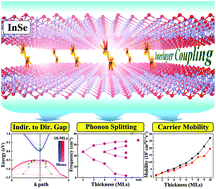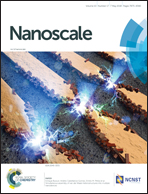InSe: a two-dimensional material with strong interlayer coupling†
Abstract
Atomically thin, two-dimensional (2D) indium selenide (InSe) has attracted considerable attention due to the large tunability in the band gap (from 1.4 to 2.6 eV) and high carrier mobility. The intriguingly high dependence of the band gap on layer thickness may lead to novel device applications, although its origin remains poorly understood, and is generally attributed to the quantum confinement effect. In this work, we demonstrate via first-principles calculations that strong interlayer coupling may be mainly responsible for this phenomenon, especially in the fewer-layer region, and it could also be an essential factor influencing other material properties of β-InSe and γ-InSe. The existence of strong interlayer coupling manifests itself in three aspects: (i) indirect-to-direct band gap transitions with increasing layer thickness; (ii) fan-like frequency diagrams of the shear and breathing modes of few-layer flakes; and (iii) strong layer-dependent carrier mobilities. Our results indicate that multiple-layer InSe may be deserving of attention from FET-based technologies and may also be an ideal system to study interlayer coupling, possibly inherent in other 2D materials.



 Please wait while we load your content...
Please wait while we load your content...